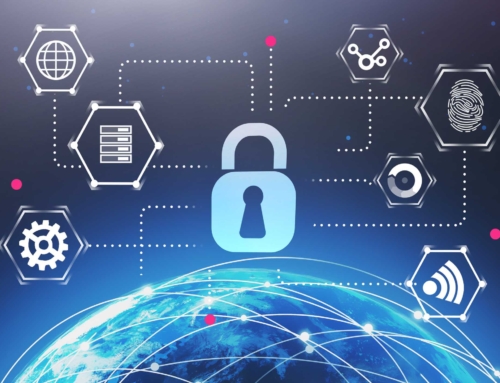Cybersecurity Metrics to Measure Ransomware Preparedness
Understanding the Landscape of Ransomware Threats
Ransomware preparedness metrics are increasingly becoming essential tools for organizations as they navigate through the evolving landscape of cyber threats. In recent years, ransomware attacks have become more sophisticated, leveraging advanced techniques to exploit vulnerabilities within corporate networks. These attacks can cripple business operations, resulting in significant financial losses and damage to an organization’s reputation. As part of our commitment to offering robust IT management and network services at Alvaka, we recognize the importance of staying abreast of these threats and using metrics to quantify our readiness.
Importance of Measuring Ransomware Preparedness
Gauging an organization’s preparedness for ransomware attacks is not simply a matter of due diligence; it’s a critical component of our cybersecurity strategy’s foundation. Without measurable indicators, our efforts to secure the network remain guesswork. The deployment of ransomware preparedness metrics allows us to establish a baseline, identify gaps in our defense, and prioritize enhancements where they are most needed. At Alvaka, we understand the value of these quantifiable measures to not only demonstrate our existing defense capabilities but to also articulate the security posture to stakeholders and inform strategic decisions.
Introducing Ransomware Preparedness Metrics
Ransomware preparedness metrics represent a critical benchmark for evaluating the robustness of our cybersecurity posture. As a leading provider of IT management and network services, we at Alvaka have developed a suite of metrics tailored to assess and enhance our client’s defenses against ransomware. These metrics serve as the compass guiding our security efforts, ensuring we remain aligned with industry best practices while providing tailored solutions to strengthen our client’s resilience against these malicious threats.
Identifying Key Ransomware Preparedness Metrics
Assessing Ransomware Incident Response Time
One critical metric we focus on is the response time to a potential ransomware incident. This measure reflects how quickly our team can identify and react to a breach. We strive to ensure that this time frame is as short as possible, as a swift response is often the difference between a contained incident and a full-scale business disruption. Monitoring this metric continuously allows us to refine our response plans and training programs, ensuring that every team member knows their role in the face of an attack.
Evaluating the Effectiveness of User Awareness Training
Ransomware often relies on user error to gain a foothold in an organization’s network. As such, the effectiveness of our user awareness training is a paramount metric. We regularly conduct phishing simulation exercises to assess how well personnel can identify and report malicious emails. An improvement in this metric over time signals a decrease in the likelihood that an employee will inadvertently trigger a ransomware infection.
Measuring the Sophistication of Access Controls
The strength and sophistication of our access controls are vital metrics in mitigating the risk of ransomware. We evaluate the effectiveness of strategies such as least privilege access, multi-factor authentication (MFA), and just-in-time access. Fine-tuning these controls helps to minimize the potential impact of ransomware by ensuring that attackers cannot easily move laterally within our network if they do gain access.
Utilizing Ransomware Preparedness Metrics Effectively
Implementing a Cyclical Review Process
Effectively utilizing ransomware preparedness metrics involves a cyclical process of review and improvement. At Alvaka, we regularly analyze these metrics to identify areas of strength and weakness. We also compare our performance against industry benchmarks to ensure that we remain at the leading edge of cybersecurity practices. This ongoing evaluation fosters a culture of continuous improvement and helps us adapt to the evolving nature of ransomware threats.
Adopting a Multi-Layered Security Strategy
We recognize that no single metric or security measure can provide complete protection against ransomware. Consequently, we adopt a multi-layered approach to security, combining various defensive methods and technologies. This strategy is informed by our ransomware preparedness metrics, guiding our investment in tools like endpoint detection and response (EDR) systems, secure backups, and network segmentation.
Ransomware Preparedness Metrics: Success Stories in Ransomware Mitigation
- Swift Identification and Containment: By consistently achieving low incident response times, we’ve successfully contained ransomware attacks, preventing them from escalating to widespread encryption events.
- Effective User Training Outcomes: Our metrics have shown significant improvements in employee awareness, directly contributing to the reduction in successful phishing attempts—a common vector for ransomware.
- Enhanced Access Control Measures: Our continual refinement of access controls has been instrumental in stopping ransomware spread, protecting sensitive areas of our network even when a breach occurs elsewhere.
Did you know that by regularly evaluating their Ransomware Preparedness Metrics, organizations reduced downtime by an average of 32% after a ransomware attack?
Evaluating the Impact of Ransomware Preparedness Metrics
As we draw this discussion to a close, it’s evident that the strategic implementation of ransomware preparedness metrics is instrumental in fortifying an organization’s cybersecurity defense. At Alvaka, we recognize that each metric, when meticulously tracked and analyzed, contributes to a layered security strategy that can significantly thwart the efforts of cybercriminals. The journey to optimal defense is continuous, and through these metrics, we empower businesses to stay ahead of the evolving ransomware threat landscape.
Fostering Resilience Against Cyber Threats Using Ransomware Preparedness Metrics
We have observed that organizations guided by ransomware preparedness metrics are better equipped to respond to and recover from ransomware incidents. By quantifying readiness and identifying areas of improvement, we ensure that the path to cybersecurity resilience is clear and attainable. Our mission is to transform these metrics from abstract concepts into concrete action plans that safeguard the integrity of your business operations.
Investing in advanced detection tools, robust backup solutions, and regular training sessions for staff are all showcased in the data these metrics provide. They aren’t just numbers; they are a narrative of your company’s commitment to cybersecurity. By prioritizing these metrics and making them a core aspect of your IT strategy, we guide your business towards a state of readiness that can adapt to any cyber threat.
Advancing Ransomware Defense through Commitment and Expertise
Our commitment at Alvaka is to ensure that the adoption and application of ransomware preparedness metrics translate into actual cybersecurity strength. We are dedicated to offering unmatched expertise and innovative tools necessary to not just measure, but also enhance your ransomware defense mechanisms. Quality, agility, and strategic foresight define our approach to protecting our clients, with a strong emphasis on preemptive strategies and rapid response capabilities.
We underline the importance of not only establishing robust ransomware preparedness metrics but also of regularly reviewing and updating them to stay aligned with the latest threats. The true measure of a company’s cybersecurity posture lies in its ability to not just withstand but swiftly recover from ransomware attacks. We invite you to learn more about our approach to ransomware recovery and how our metrics can inform and elevate your security strategy. Together, we can work towards making your business resilient against the ever-present threat of ransomware.
FAQ
What is ransomware and how can it impact my organization? ▼
Ransomware is a type of malware that encrypts data and demands payment for the decryption key. It can severely impact your organization by halting operations, causing data loss, and damaging your reputation.
Why is it important to measure ransomware preparedness? ▼
Measuring preparedness helps ensure that your organization has the necessary defenses in place to mitigate the risk of ransomware attacks, potentially saving you from significant financial and reputational losses.
What are some key ransomware preparedness metrics we should track? ▼
Key metrics include time to detect an intrusion, time to respond to a threat, rate of successful phishing attacks, system patching cadence, and employee cybersecurity training effectiveness.
How often should we evaluate our ransomware preparedness metrics? ▼
Consistently, ransomware preparedness metrics should be evaluated at least quarterly. However, considering the evolving threat landscape, reviewing these metrics more frequently may be prudent.
Can ransomware preparedness metrics predict the likelihood of an attack? ▼
While no metric can predict an attack with certainty, ransomware preparedness metrics can provide valuable insight into your organization’s vulnerability and guide you in strengthening your defenses.
How can we use ransomware preparedness metrics to improve our cybersecurity? ▼
We can use these metrics to identify weaknesses in our cybersecurity posture and make informed decisions about where to allocate resources to bolster our defenses.
What role do employees play in ransomware preparedness? ▼
Employees are a critical line of defense. Providing regular training on threat recognition and response is vital for maintaining organizational resilience against ransomware.
Should our ransomware preparedness metrics be shared with external stakeholders? ▼
Strategically, information about your preparedness may be shared with stakeholders to ensure transparency and foster trust. However, sensitive details should be managed carefully to avoid compromising security.
Can ransomware preparedness metrics help in post-attack recovery? ▼
Absolutely, analyzing metrics post-attack can provide insights into the nature of the breach and help refine recovery strategies and future preparedness.
Where can I find resources to help develop ransomware preparedness metrics for our organization? ▼
We recommend consulting industry frameworks, such as NIST guidelines, and working with cybersecurity experts to develop and interpret the right metrics for your organization.








 Smoke testing is a term used to describe the testing process for servers after patches are applied.
Smoke testing is a term used to describe the testing process for servers after patches are applied.  This is a basic cost calculator for you to compute your typical monthly cost for patching your servers, PCs, laptops, tablets and associated application software. It also forms the basis for you to begin calculating your Return on Investment for software patching, or for comparison with alternatives to the manual process of patching operating systems and application software—such as Patch Management as a Service, also known as Vulnerability Management as a Service.
This is a basic cost calculator for you to compute your typical monthly cost for patching your servers, PCs, laptops, tablets and associated application software. It also forms the basis for you to begin calculating your Return on Investment for software patching, or for comparison with alternatives to the manual process of patching operating systems and application software—such as Patch Management as a Service, also known as Vulnerability Management as a Service.